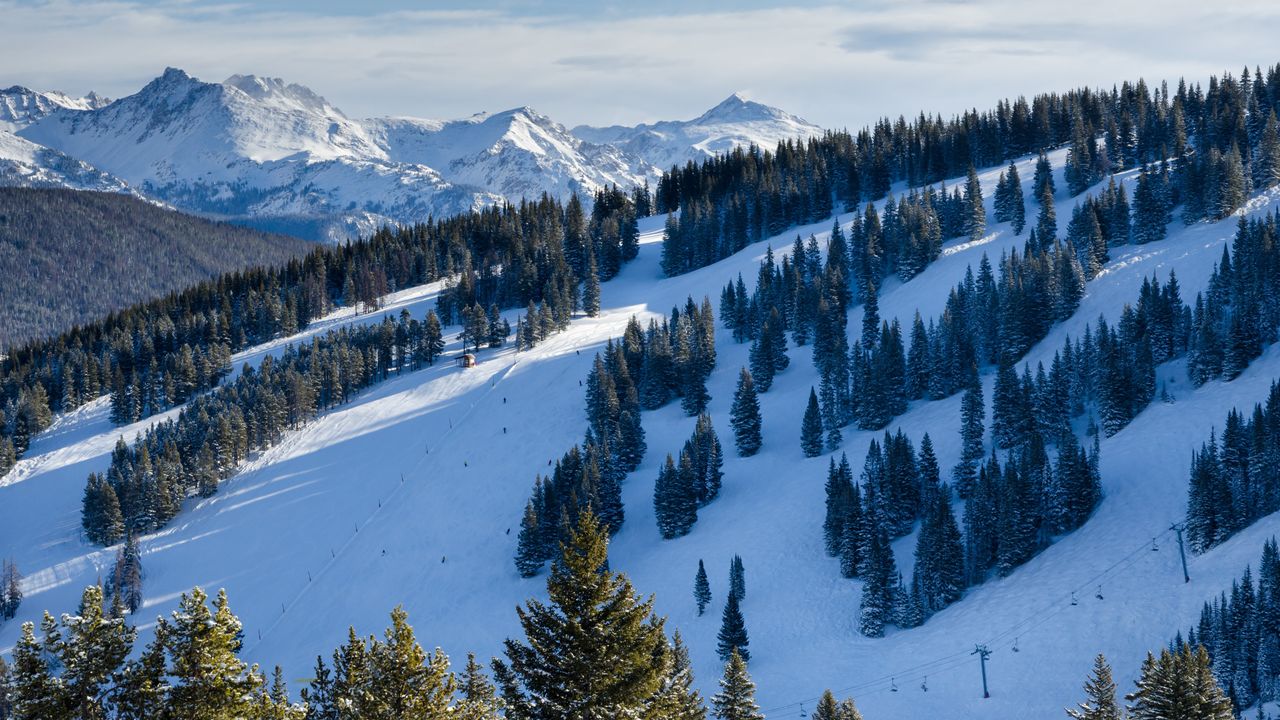
On a cold April morning, my boyfriend and I pull our ski jackets closer as we huddle into the cozy warmth of the gondola as it whisks us from Vail Village up the mountainside. The low clouds that have been obscuring the views for the past few days during a late-season storm are starting to clear and suddenly the Gore Range bursts into view, resplendent in the morning sunlight. It’s going to be a good day.
We reach mid-Vail in just under eight minutes and emerge into the cold at 10,000 feet above sea level. From here, it’s a quick two-minute warm up run down to the next chairlift and then we’re on our way to the top of Vail mountain. Now at 11,570 feet, the air is thin and clean and the last of the clouds has burned off, leaving us with captivating views of the Rocky Mountains and the distinctive snow cross marking Mount of the Holy Cross, a Colorado 14er just a few miles to the south.
On most ski hills, when you reach the top, the only way out is down, but from here, the question remains – which way? You can head back down the front side via any one of dozens of blues, greens and blacks then begin your journey again from the village, or make your way west to Lionshead Village. Alternatively, you can disappear down the backside to explore Vail’s famous back bowls – seven alpine basins that offer adventurous skiers some three thousand acres of ungroomed terrain. In other words, a skier’s paradise.
A short film that plays on repeat at the Colorado Snowsports Museum down in the village parking structure tells the story of how the founders of the resort – a local named Earl Eaton and his friend, Pete Seibert, a 10th mountain division ski mountaineer – suspected the mountain held promise for an epic ski resort, but it wasn’t until they raised the funds to pilot a helicopter over the terrain and discovered the bowls that they realized its true potential. In 1962 their dreams of opening a ski resort here, 100 miles west of Denver, came true and today, Vail is one of the biggest resorts in the world.
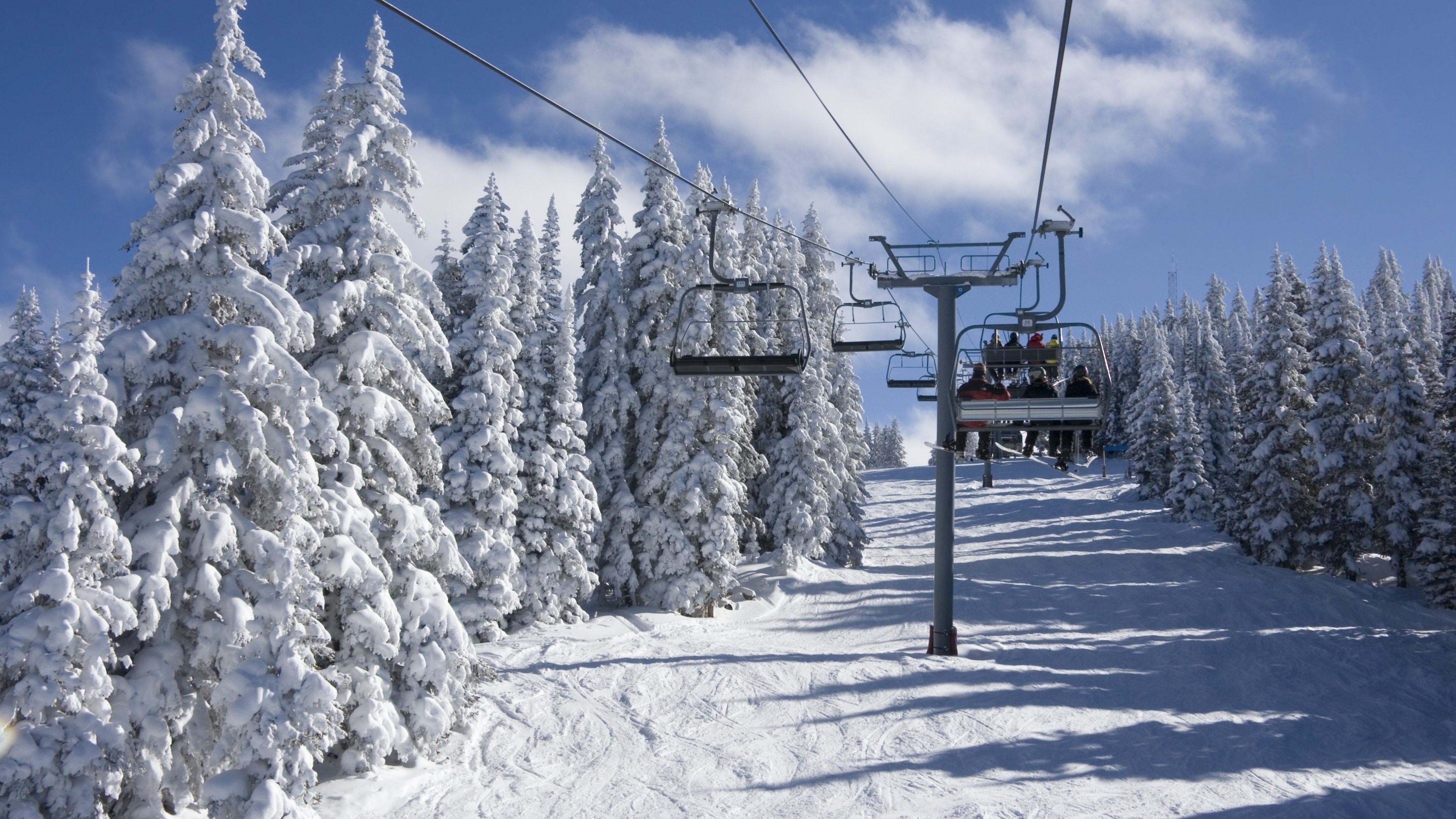
Back to the present, we’re planning on skiing all day, so we start out with a few easy runs down slopes with lighthearted names like Swingsville and Christmas before meeting a friend to head to Blue Sky Basin. John has lived in Vail for decades and, though an expert skier, has agreed to slow down for us and show us his home turf. Blue Sky is the backmost bowl and is north-facing, meaning the recent snow is bound to be extra fluffy. To get there, we head down a long and winding road to chair 37 and spend some time cruising the bowl, delighting in the distinct absence of crowds – more common back here, but generally a rare treat at such a popular resort.
After a couple of hours, our thighs aquiver, we start to make our way back to the front, stopping for a rest at Two Elk Lodge, famous for being the site of a notorious eco-terrorist attack in 1998 when it was razed to the ground. Today it’s been rebuilt as a cavernous cafeteria constructed with heavy timber beams in a classic western style, where you can fuel up on typical ski resort fare like burgers, pork green chili and chicken posole soup. A little weary of so much hearty food and keen not to spend our entire mortgage payment on lunch, we’ve brought our own sandwiches from the hotel and opt to sit outside in the sunshine with drinks.
An hour later, officially spent, we’re walking through the village with our skis over our shoulders. A picturesque shopping mall that’s built around bubbling Gore Creek, the village is modelled on traditional Bavarian ski towns and gives off a slight Disney-esque vibe, with fur coat-touting boutiques, global outdoors brands and high-end restaurants lining the pedestrian walkways.
Despite its slightly manufactured feeling, it’s not without its charm and shop owners lean out of their doors to ask how our day was as the spots long-popular with locals – Vendetta’s Pizza and Los Amigos – begin to fill with an exuberant aprés crowd.
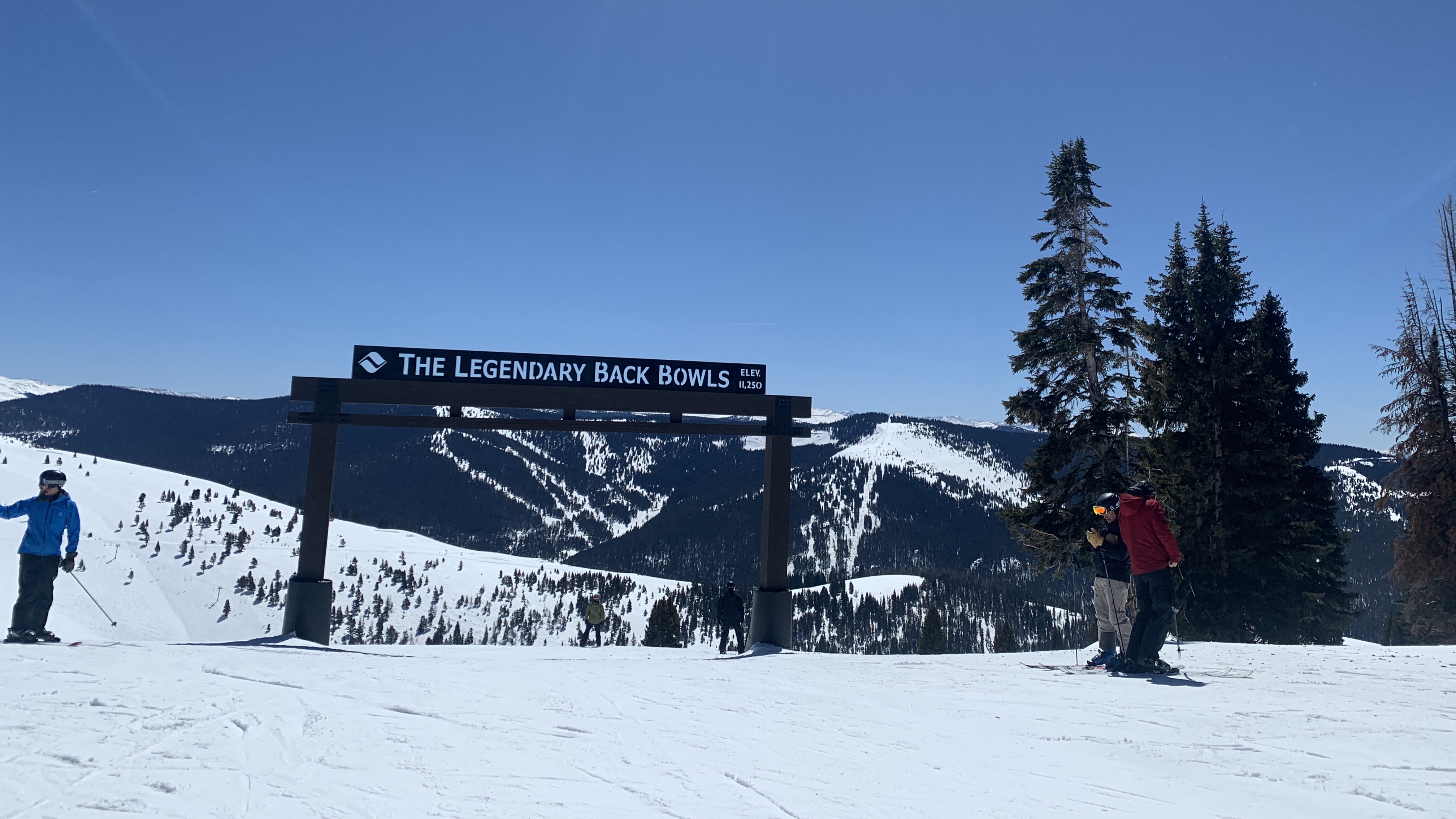
We opt for cold beers on the deck of Los Amigos, an afternoon sun trap where locals make a sport of watching exhausted skiers navigate the perils of Pepi’s Face, a 250-foot black diamond slope with an almost 45-degree pitch that turns into a near-vertical skating rink by last chair. Pepi, for whom the death trap run is named, is one Pepi Gramshammer, an Austrian ski racer who was lured to Vail in the early 1960s by its founders and was one of the first skiers to discover the back bowls – though of course, back then, he had to hike in.
He remained in Vail for the rest of his life, opening the hotel Gasthof Gramshammer in the heart of the village in 1964. His was one of just a few businesses on Bridge Street and it’s still there today; in fact, it’s where we’re staying on this trip. Though Gramshammer died in 2019, his wife Sheika, a former model and Las Vegas dancer, still lives in and manages the daily operations of the 38-room hotel. We suck down the last of our beers and head now to the distinctive yellow building with wooden balconies that’s become a beacon of refuge for us after our long ski days.
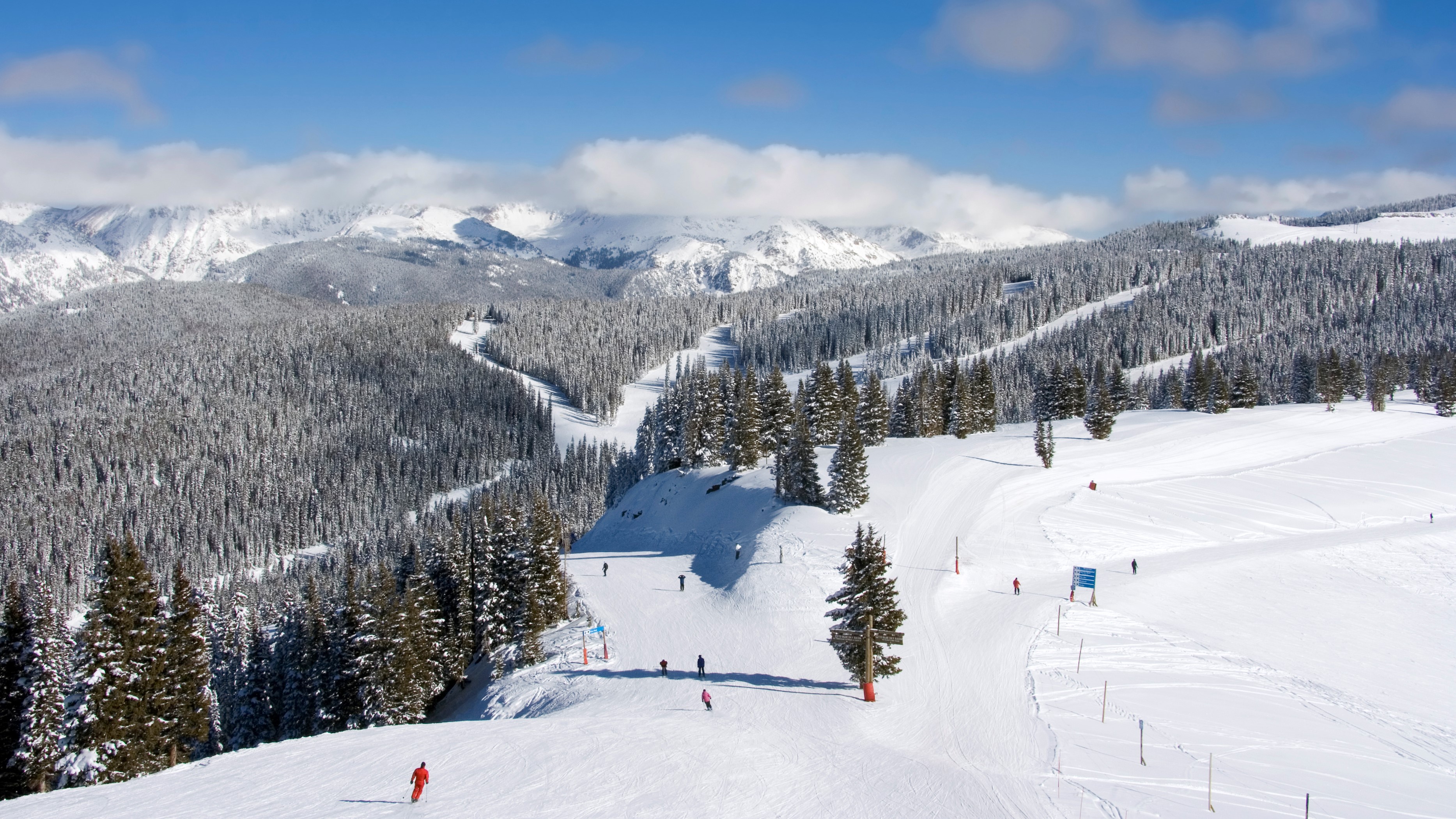
Getting there: Fly to Denver then connect to Eagle County Regional airport (34 miles from Vail) via a short plane ride, or hop a mountain shuttle to the resort. If you're driving, make sure you understand traction laws.
Lift ticket rate: Adult (13+) passes from $269/day. Save by booking in advance, bundling your tickets with lodging, or buying the Epic Pass which you can use across Vail Resorts properties.
Accommodations: Hotel Gasthof Gramshammer is an authentic Austrian inn with 38 rooms, a bar and restaurant with large deck, and modest spa facilities.
Where to eat: Big Bear Bistro for epic French toast and hot chocolate, El Sabor for Mexican food with a view, Pepi's Deck for aprés and Mountain Standard for classic mountain food with a modern twist.
Website: www.vail.com
We drop off our skis in the locker room, then pile into the lobby, where the concierge greets us cheerfully and quickly busies herself lighting the fire so we can relax in the armchairs and warm up. After a while, heads heavy and legs throbbing, we make our way through the halls of this character-filled hotel to our spacious room, which boasts a long balcony and mountain views. After a lie down, we hit the hot tub for some post-skiing recovery, then it’s back out into the twinkling lights in search of grub.
Here we play our favorite game – find the most overpriced item on the menu. In a town like Vail, where lift tickets can run well into the hundreds of dollars for a day, there are a lot of contenders. Tonight it’s $12 chips and salsa at the Red Lion, a cheerful bar and restaurant that we can only assume succeeds in selling this item out of sheer audacity. We try for Mountain Standard, a creekside restaurant offering modern-rustic fare that’s easily one of the best in town, but upon learning it’s over an hour wait for a table, we head to one of our old favorites: Joe’s Deli, where you can get mammoth-sized sandwiches at prices that don’t give you whiplash.
We wander over the covered bridge and through the streets, munching on giant subs and enjoying the people-watching. With the end of the ski season imminent, it’s a mix of tired locals and happy tourists, young and affluent skiers dressed to the nines, shabby skiers like ourselves and kids playing in the fountain. After ice creams, we decide it’s time to call it a day; there’s more skiing to be done tomorrow.
Vail’s official slogan is “like no place on earth” and the truth is, especially when you’re jet lagged, it’s confusingly like a lot of other alpine ski resorts. But it’s hard to deny the skiing is sublime (just ask Lindsey Vonn, who trained here for years), the village positively enchanting in the alpenglow and the (mostly) friendly locals who make us feel welcome here, seven thousand miles from home.
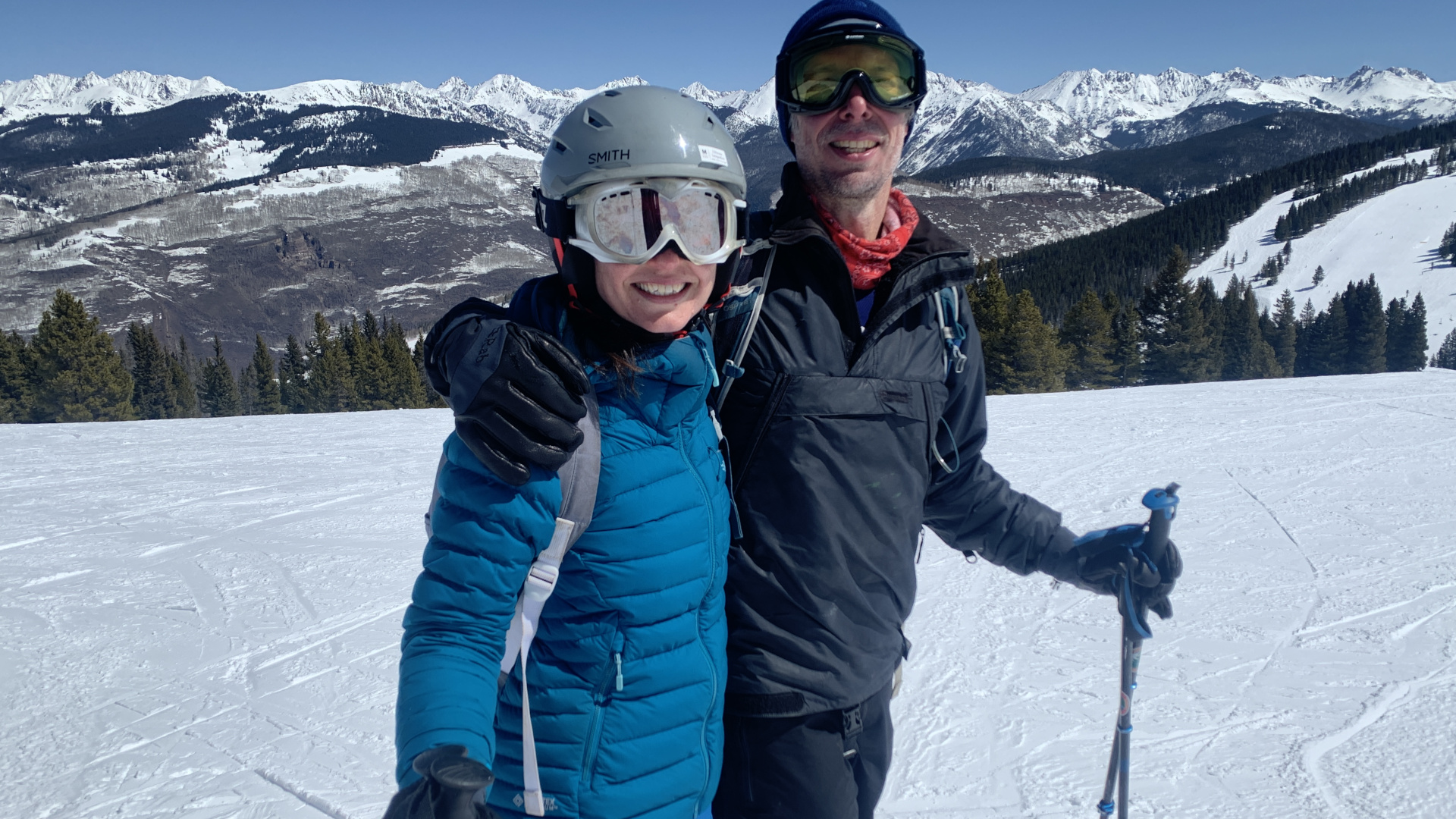
What to pack for skiing Vail
Though we traveled in the spring when Rocky Mountain temperatures are mild, we were blessed with snow and cold temperatures, and you should always go prepared for all conditions on a ski trip and bring plenty of layers. Here's what I wore for skiing Vail:
- Ski pants: Helly Hansen Women's Powderqueen Bib Ski Pants
- Base layer: Helly Hansen LIFA Merino Midweight Crew Base Layer
- Mid layer: Helly Hansen Varde Fleece Jacket 2.0
- Ski jacket: Helly Hansen Elevation Infinity 2.0 Ski Shell Jacket
- Ski gloves: Helly Hansen Swift HT Ski Gloves







